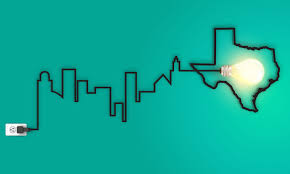Cornyn, Padilla Introduce Bill to Help Make U.S. Electric Grid More Resilient
 U.S. Senators John Cornyn (R-TX) and Alex Padilla (D-CA) today introduced the Grid Resilience Innovation and Development (GRID) Act, which would direct the U.S. Department of Energy to research how quantum applications and computing can make the U.S. electric grid more resilient, secure, and efficient:
U.S. Senators John Cornyn (R-TX) and Alex Padilla (D-CA) today introduced the Grid Resilience Innovation and Development (GRID) Act, which would direct the U.S. Department of Energy to research how quantum applications and computing can make the U.S. electric grid more resilient, secure, and efficient:
“The electric grid in Texas and other regions across the nation must be able to manage the strain of extreme weather, increased demand, and other challenges,” said Sen. Cornyn. “This legislation would help determine how best to harness the advanced capabilities of quantum computing to make the U.S. electric grid more resilient.”
“Our national and economic security depend on a strong electrical grid that can reliably provide power to every American,” said Sen. Padilla. “Building off of California’s innovation and leadership, it’s crucial that we conduct further research into quantum computing technology, pushing forward groundbreaking technological efforts. This bipartisan legislation would help harness this emerging technology to optimize the U.S. electrical grid and ensure that the lights stay on in our households and businesses.”
Background:
Currently, models used to monitor the electric grid during normal operations and in times of emergency are run on supercomputers. However, given the growing number of inputs and outputs to the grid from renewables, energy storage technology, and heightened demand, the electric grid may become too complex for current supercomputers. Quantum computing has the potential to assist in managing and optimizing the U.S. electric grid, but more research and development is needed.
The GRID Act would amend the National Quantum Initiative Act to require the U.S. Secretary of Energy to conduct research and development in cooperation with national laboratories, higher education institutions, and other relevant industries in:
- Fault detection and prediction;
- Grid security and safety, including through post-quantum cryptography;
- Integrated grid planning;
- Grid optimization;
- Enhanced modeling;
- Energy storage;
- And energy market optimization.








